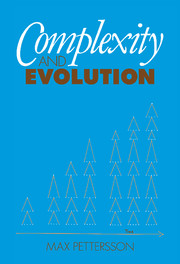Book contents
- Frontmatter
- Contents
- Foreword by Joseph Needham, FRS
- Preface
- Acknowledgements
- 1 Natural and other hierarchies
- 2 Major integrative levels
- 3 Some logarithmic forms of display
- 4 Physical range of integrated natural entities
- 5 Biological range of integrated natural entities (first part)
- 6 Biological range of integrated natural entities (second part)
- 7 Social range of integrated natural entities
- 8 Human societies (first part)
- 9 Human societies (second part)
- 10 Acceleration in evolution
- 11 Further allied accelerations
- 12 Aspects of number
- 13 Aspects of mass
- 14 Positive skewness
- 15 Quantitative conclusions
- Bibliography
- Index
8 - Human societies (first part)
Published online by Cambridge University Press: 18 January 2010
- Frontmatter
- Contents
- Foreword by Joseph Needham, FRS
- Preface
- Acknowledgements
- 1 Natural and other hierarchies
- 2 Major integrative levels
- 3 Some logarithmic forms of display
- 4 Physical range of integrated natural entities
- 5 Biological range of integrated natural entities (first part)
- 6 Biological range of integrated natural entities (second part)
- 7 Social range of integrated natural entities
- 8 Human societies (first part)
- 9 Human societies (second part)
- 10 Acceleration in evolution
- 11 Further allied accelerations
- 12 Aspects of number
- 13 Aspects of mass
- 14 Positive skewness
- 15 Quantitative conclusions
- Bibliography
- Index
Summary
Introduction
Three centuries ago Archbishop Ussher of Armagh, in Ireland, made a careful quantitative study of the evidence in the Old Testament of the Bible, and concluded that the first farming or agriculture (as well as the first humans) occurred about 6000 years ago. Nowadays, as a result of many careful excavations and with isotopic dating, it is concluded that farming or agriculture first appeared before 10 000 years ago, though it was roughly in the same part of the world as the Bible suggests.
Whether or not one invokes supernatural intervention to help account for subsequent changes, since the beginning of agriculture the ways of human life have come to diverge more and more away from those of our other mammalian cousins. For one thing there has been the increase in the number, diversity and bulk of artifacts (of made things). Another general feature has been the increasing speed and distance of the movement of people, goods and information. In William Shakespeare's play A Midsummer Night's Dream, written nearly four centuries ago, a fairy messenger named Puck promises to ‘put a girdle round about the Earth in forty minutes’. In fact nowadays radio messages can reach the other side of the Earth in less than a second.
It so happens that I used to have experience of something like that, night after night. In the early part of World War II one of my army jobs, in England, was to take down news items, broadcast by radio in the morse code, from the Domei News Agency in Japan.
- Type
- Chapter
- Information
- Complexity and Evolution , pp. 69 - 80Publisher: Cambridge University PressPrint publication year: 1996

